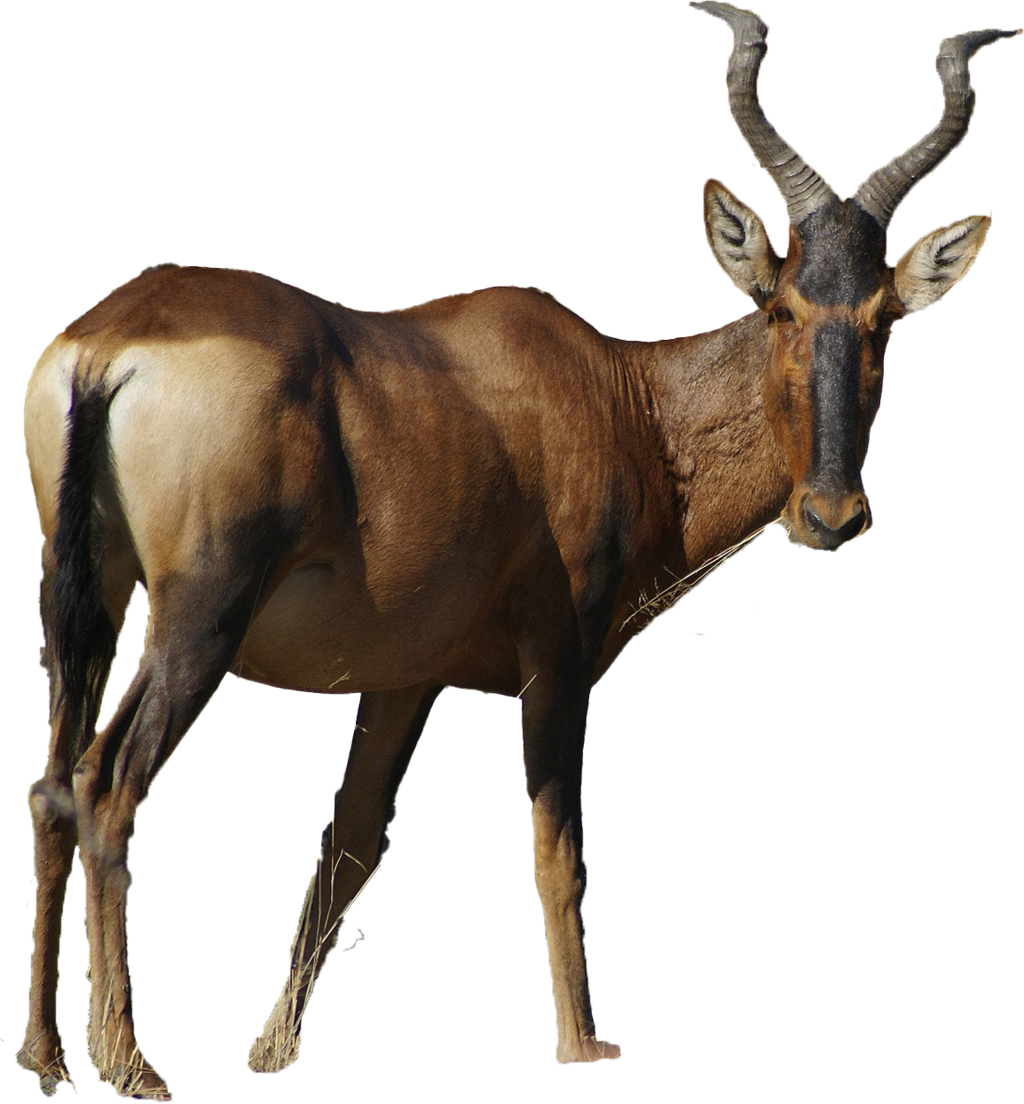
Description:
It is the most colorful hartebeest, with black markings contrasting against its white abdomen and behind. It has a longer face that other subspecies, with complex curving horns joined at the base.[4] The average weight of a male is about 150 kg, and female is 120 kg. Their average shoulder height is 135 cm, and horns are 60 cm long. The life expectancy of a red hartebeest is around 19 years.
Habitat:
They are usually habitable to dry, arid regions of Namibia, the Kalahari, southern Botswana, and north-western South Africa.
Diet:
Red hartebeests are grass feeders, which is evidenced by their long snouts, which give the advantage of an improved cropping ability to acquire and masticate grasses more efficiently. During the rainy season in southern Africa, where grass is in abundance and is the main source of dietary consumption. As grazers, their diets fluctuate seasonally, as they consume higher-quality, green primary production in wet seasons, and lower-quality sheath material in the dry seasons. Hartebeests are considered less water-dependent than most alcelaphines, only needing to drink water when melons and tubers are inaccessible.
Behavior:
When alarmed, hartebeests flee, reaching a maximum speed of 55 km/h. Their evasion tactic is to induce confusion by running in a zigzag pattern, making it difficult for predators to catch them. Most ungulates in Africa are nomadic, as they are dependent on food sources that become depleted if they stay in one place.